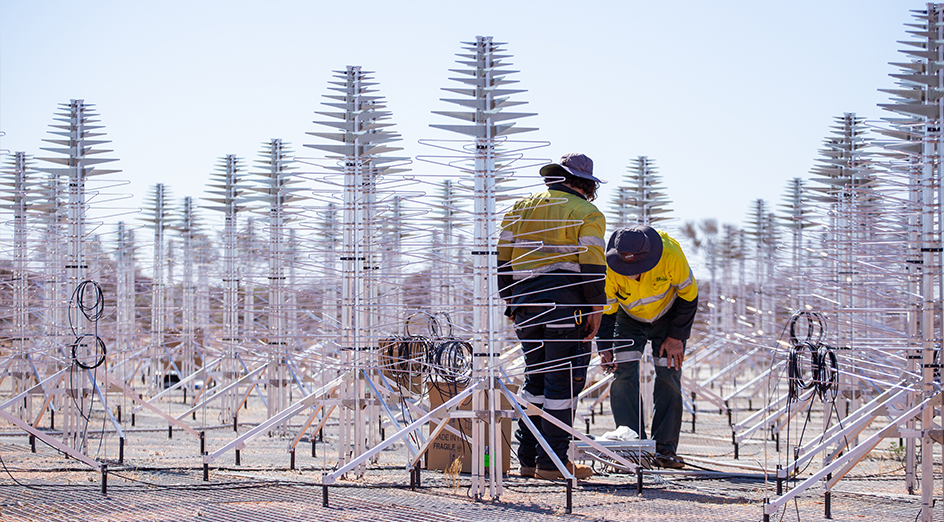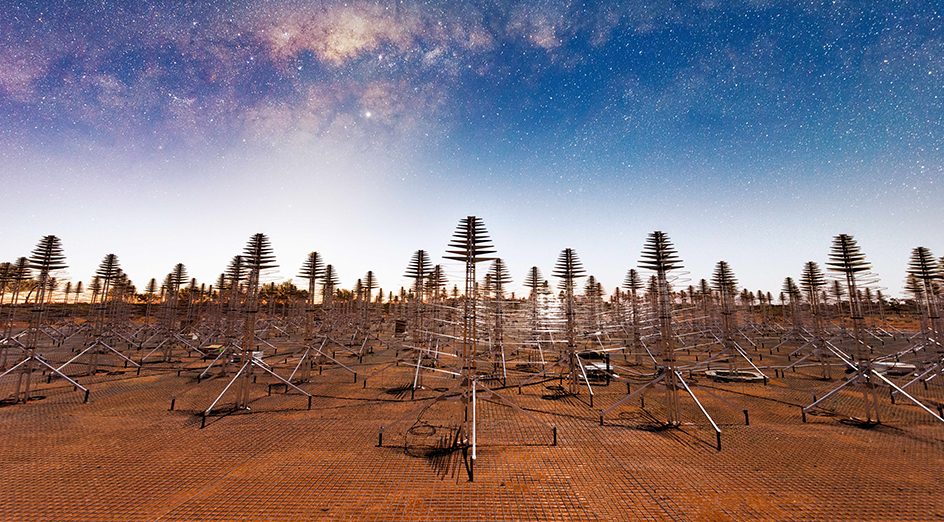The federal government will invest $64.4 million to establish a centre in Perth to process and analyse data from the Square Kilometre Array (SKA) radio telescope.
A global collaboration of 16 countries, the SKA will be one of the world's largest science facilities, exploring the entire history and evolution of the Universe, and uncovering advances in fundamental physics.

The Australian Square Kilometre Array Regional Centre (AusSRC), a collaboration between ICRAR, Australia's national science agency CSIRO and the Pawsey Supercomputing Centre, is part of an international network of SKA Regional Centres that will support the global flow of data and processing needed for the telescope.
ICRAR is a joint venture between The University of Western Australia and Curtin University with support and funding from the State Government of Western Australia.
Construction of the telescope is expected to begin at the end of this year. Initially, it will comprise 131,072 low-frequency Christmas tree-shaped antennas located in WA's remote Murchison region and 197 mid-frequency dish-shaped antennas hosted in South Africa's Karoo region.

Around 7 terabits of data will travel from Australia's SKA antennas to supercomputers in Perth every second.
"When the telescope is switched on, it will open the floodgates to a massive amount of data, as signals from all over the Universe pour in—it's an enormous and very exciting challenge for us," AusSRC director, Dr Karen Lee-Waddell said.
"The flow of data will be roughly 100,000 times faster than your average home broadband speed.
"Each year, we'll store around 600 petabytes coming from the SKA telescopes for astronomers and astrophysicists from all over the world to access and analyse.
"To put that into perspective, Netflix's collection of movies is currently around 15,000 titles, and we'll be storing 10,000 times more data than this every year."
The federal funding to establish a facility in Perth is part of $387 million announced for the SKA project by Prime Minister Scott Morrison during a trip to Western Australia this week.

In 2015, the Australian Government provided $293.7 million to support the SKA under the National Innovation and Science Agenda (NISA), in recognition that science, research and innovation projects can drive long-term economic prosperity, jobs and growth.
Since 2009, the WA Government has provided $71 million in funding for the International Centre for Radio Astronomy Research (ICRAR), attracting the SKA to Western Australia and maximising benefits for the State through research, job creation, diversification of the economy and innovation.
Executive director of ICRAR, also from The University of Western Australia Professor Peter Quinn, said it was an astronomical day for science in WA and Australia.
"After almost thirty years of design, development and preparation, this investment by the Commonwealth Government sends a message to the international community that Australia is fully ready to start building the SKA," he said.
"This project will not only help us better understand the Universe we live in, it will also provide STEM careers for the next generation and new technologies that benefit the everyday lives of millions of people around the world.
"All Australians should be proud that this country is going to host the SKA, one of the biggest science projects in human history."






